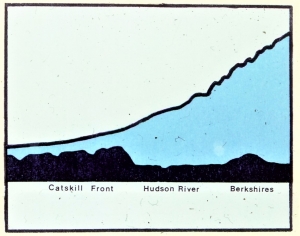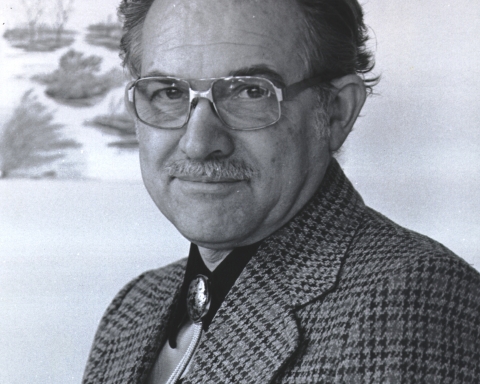The Hudson Valley: 400 years? Or 400 million?
Stories in Stone 2009
Updated by Robert and Johanna Titus
This year (2009) marks the 400th anniversary of Henry Hudson’s voyage up the Hudson River. This is a real landmark and there will be a large number of events commemorating Hudson’s historic journey, as well there should. We wonder what role geologists can play in all this? We have a way of turning up our noses at mere centuries, you know. Even a few million years is not all that impressive to us.
But, in fact, when it comes to cultural history, geologists have pretty much the same sense of time and antiquity as everyone else. We will be participating in at least one commemorative event in September. We will be speaking at the village of Stuyvesant, presenting a talk on the town’s geological history. We will also be writing up an ice age history for the town of Claverack.
But today, we would like to survey the geological history of the whole Hudson Valley. It has a venerable past and, of course, it dates back a lot more than 400 years. In fact, it appears to date back about 400 million years.
Now We had better issue a few caveats first. The history of any ancient river is always hidden in the mists of time. It is hard, really hard, to document the distant past of any river. You see, they do not preserve records of their earliest times. All rivers are in the business of eroding the landscape they flow across. That erosion destroys all evidences of their pasts. The earliest stages of development of a river’s history are worn away by the latter. We geologists have to summon up all of our powers of deduction to intuit the missing history. So, the story we will relate today does not carry the certainty of other geological tales. The evidence is just not there. Late at night, in geology bars, we happily debate this sort of thing.
As we said, this story, or this version of the story, begins roughly 400 million years ago. At that time New England was recovering from a great mountain building event: the Taconic Orogeny. Massive crustal uplift had created the earliest Taconic Mountains which, originally, towered over western New England and parts of New York State. But by 400 million years ago these mountains had, in fact, experienced a great deal of erosion and they were mere shadows of their former selves. But soon there would be another major mountain building event: the Acadian Orogeny. An even taller range of mountains came to rise above pretty much the same landscapes.
Today all these mountains have largely eroded away. We still have remnants of the Taconic’s, and the Berkshires hearken back to the much taller Acadians. The point of all this, is that the existence of these mountains would form an eastern barrier to any potential flow of rivers. If you look around eastern New York State, and all of Connecticut, Massachusetts and Vermont you will not see any significant west-to-east flowing streams. No such streams have existed for at least 400 million years.
Erosion of these long-ago Acadian Mountains produced vast quantities of quartz sand that eventually hardened into the bedrock of today’s Catskill Mountains. Originally, these sedimentary rocks piled up right against the Taconic’s and there was, at first, no room for an early Hudson Valley. These sandstones were very rugged stuff and they formed a barrier to any streamflow. Thus, there are no east-to-west flowing streams passing into and then beyond the Catskills.
But rivers, large and small, must have descended down the western slopes of the Taconic’s and when they approached the Catskills they had a problem. Which way would they flow? They couldn’t return back uphill to the east and they couldn’t advance into the Catskills either. That left north or south; they turned south and flowed toward the Atlantic. That first such flow marked the origin of the ancestral Hudson River. It assumed much of its current path, flowing north to south and on into the Atlantic.
There was more to come. During the late Jurassic, about 150 million years or so, the crust of the lower Hudson Valley rose, forcing the Hudson to carve a canyon through what are today the Hudson Highlands. With that, much that we recognize, today, as the Hudson Valley came into existence.

Profiles of Ancient Acadian Mountains and modern Hudson Valley
Is this the true story? We don’t know; it is a good one, but much debate remains. Maybe someday we will have a better version. But, until then, this yarn has a lot to recommend it. The next time you find yourself out in the middle of the Hudson Valley, look east to the Taconic’s, and then west to the Catskills. At first there had just been a small crease here, lying between the two highlands. Appreciate that for hundreds of millions of years the Hudson has been slowly widening and deepening this crease, turning it into our great Hudson Valley.
=============================================================
Contact the authors at randjtitus@prodigy.net. Join their facebook page “The Catskill Geologist.”





